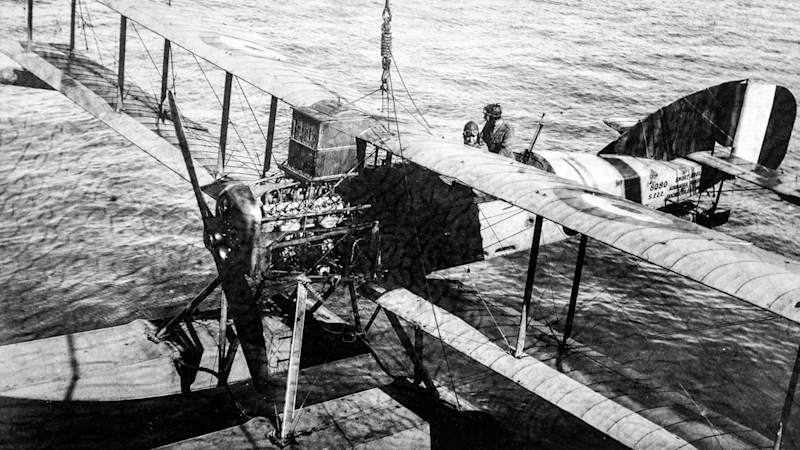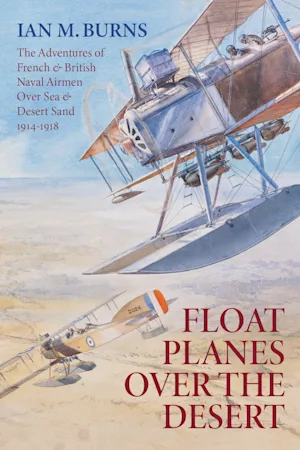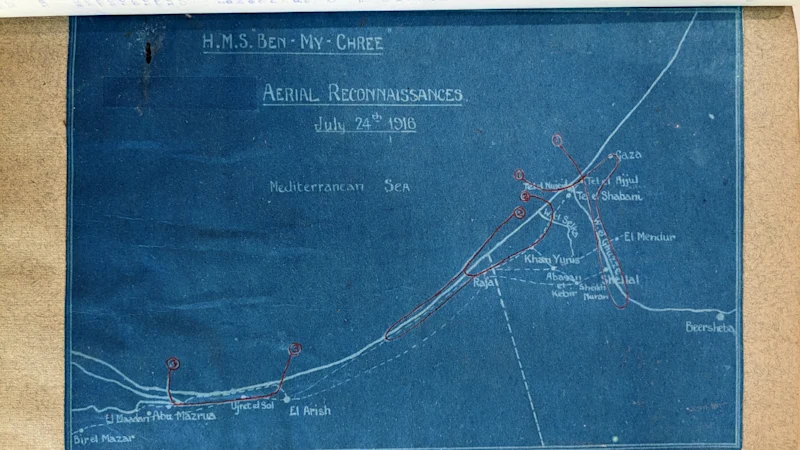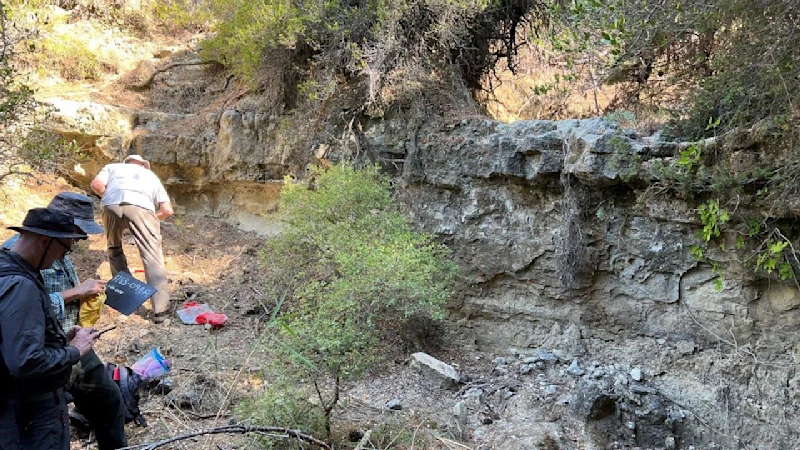In June 1916, as the Great War raged across Europe’s trenches, a very different kind of aerial warfare was unfolding in the sweltering waters between the Red Sea and the Arabian Sea. Far from the Western Front, the Royal Naval Air Service’s East Indies & Egypt Seaplane Squadron was pioneering new forms of naval aviation in one of the war’s most challenging theatres.
At the heart of these operations was HMS Ben-my-Chree, a converted Isle of Man packet steamer that had been transformed into one of Britain’s early seaplane carriers. Under the command of Commander Charles Rumney Samson, this unlikely warship carried just five floatplanes—two Shorts, two Schneiders, and a Sopwith Baby—into the furnace-like conditions of the Yemen coast. There, operating in heat so severe that engines could barely lift their aircraft above 1,500 feet before their cooling water boiled away, these naval airmen would demonstrate the psychological impact of air power on isolated Turkish garrisons.
This dramatic episode forms part of Ian M. Burns’ comprehensive new study, Floatplanes Over The Desert. The 568-page work, richly illustrated with photographs and maps, chronicles the operations of the French Navy’s Aéronautique maritime and the Royal Naval Air Service in the Middle East and Eastern Mediterranean.
In the extract below, we follow Ben-my-Chree from her intensive bombing campaign at Aden in early June 1916, through a dawn raid on Sheikh Said, to her urgent summons to Jeddah on 15 June, where Turkish forces were under siege by the Arab Army. What follows is a remarkable account of how three battle-worn seaplanes, operating at the very limits of their capabilities, may have provided the final push that secured a crucial Red Sea port.
Ben-my-Chree at Aden and Jeddah
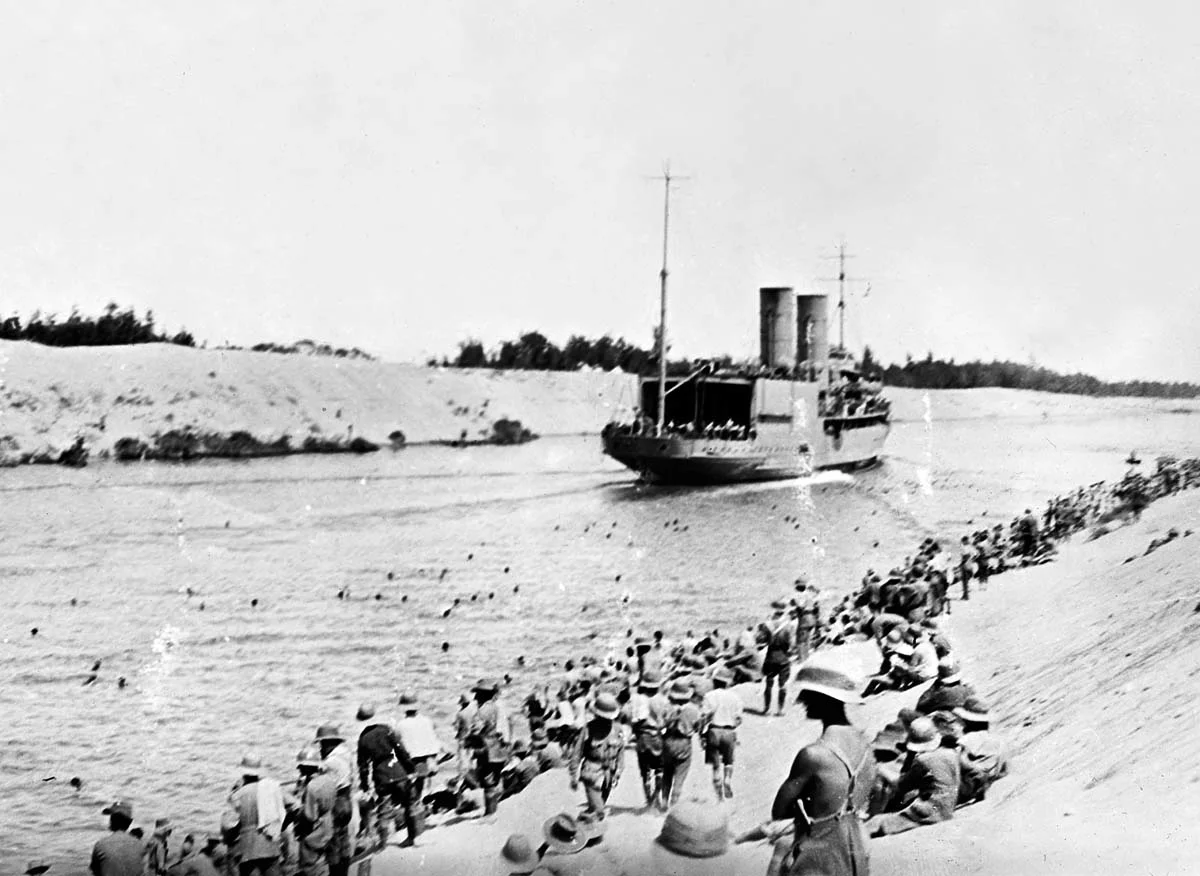
Ben-my-Chree sailed from Port Said on 2 June to take passage through the Suez Canal and on to Aden. In her hangar were two Shorts, S.2 and S.3, two Schneiders, B.1 and B.3, and Baby B.5.1 Besides Samson himself the pilots were Flt Lts Bankes-Price, England, Wright and FSL L.P. Paine. Observers were Lt J.H.B. Wedderspoon, 2Lt Benn (he was promoted Temporary Captain on 8 July, later confirmed and backdated to April 1916), 2Lt J.M. Burd, and 2Lt L. Clarke. Ben-my-Chree approached Aden at dawn 7 June, sending off Short S.2, with Wright and Burd to reconnoitre from Waht across the lines to Imad. The Short returned just as the seaplane carrier was coming to anchor.
Some quick work enabled Samson to present a full report of the flight, complete with photographs and maps, when he reported to General Walton. It was an impressive demonstration of the use of air power which delighted the General. With his full backing Samson embarked upon ‘as intensive a bombing as my limited resources permitted.’
I knew that our only chance of being able to fly with the Shorts was to try to get off very early in the morning or late in the afternoon, as the severe heat would inevitably not only boil all our cooling water away, but probably affect our lift. As it was, we had a terrible time getting the Shorts off the water under existing conditions, and being unable to ascend beyond 1500 feet we soon began to lose our water whilst flying. On several trips it was touch-and-go whether we could get back before the engine seized up through this cause.2
As these were almost a carbon copy of the earlier work done by Raven only a few highlights will be mentioned. The bombs carried this time were bigger. The Shorts carrying bombs up to 112-lb, the Sopwiths up to 65-lb. The intent being to carry out as many flights as possible in the time available, bombing and reconnaissance flights were made morning and evening between 8 and 12 June. During the four days of attacks, 8, 9, 11 and 12 June, a total of fifteen individual sorties were flown, 10 June was a ‘rest’ day for maintenance and to hopefully catch the Turkish force unawares the following day. Three 112-lb, three 65-lb, seventeen 20-lb, four 16-lb, 14 petrol bombs, and one carcass (saltpetre and sulphur) were dropped, plus a single box of flechettes. All flights were met with accurate rifle and machine gun fire and some anti-aircraft shrapnel was reported but, although the floatplanes were hit several times, there was no major damage or injuries.
On the morning of 8 June Samson and Wedgewood Benn were the first off, at 05.20 on Short S.2, with a single 112-lb bomb, three 16-lb bombs, and four ‘hoppers’ for Benn’s Lewis gun. Benn later wrote, ‘We took a 112 lb. bomb on the rack in the undercarriage, and I carried a few 16 lb. bombs in the back seat.’ The Short was also laden down with a W/T set and a camera, thus overladen the Short needed a two mile run to takeoff. Passing Waht they were unable to climb above 700 feet, at Lahej they were less than 400 feet above the roofs of the town.
As this was too low to drop the 112 lb bomb at the Mosque owing to risk of damage to seaplane from the explosion of the bomb. The 112 lb bomb was dropped at and hit dug-out into which men were seen to go from camp in trees just N of Lahej. Two 16 lb bombs hit camp from height of 800 feet; emptied two hoppers from Lewis gun against camp. Lahej was full of troops and Arabs and firing was observed from 4 small guns, two of which were on house tops (probably 10 pdrs); one or two shells that burst were of larger size than 10 pdrs, one star shell was observed. Machine guns and heavy rifle fire were also encountered; two rifle bullets hit seaplane.3
They returned to the ship and landed alongside at 06.19. The Mosque, and similar buildings, were widely suspected of being used as ammunition or supply dumps and considered legitimate targets. Arab agents reported that the bomb dropped on the dug-out, actually a gun pit, killed seven men.
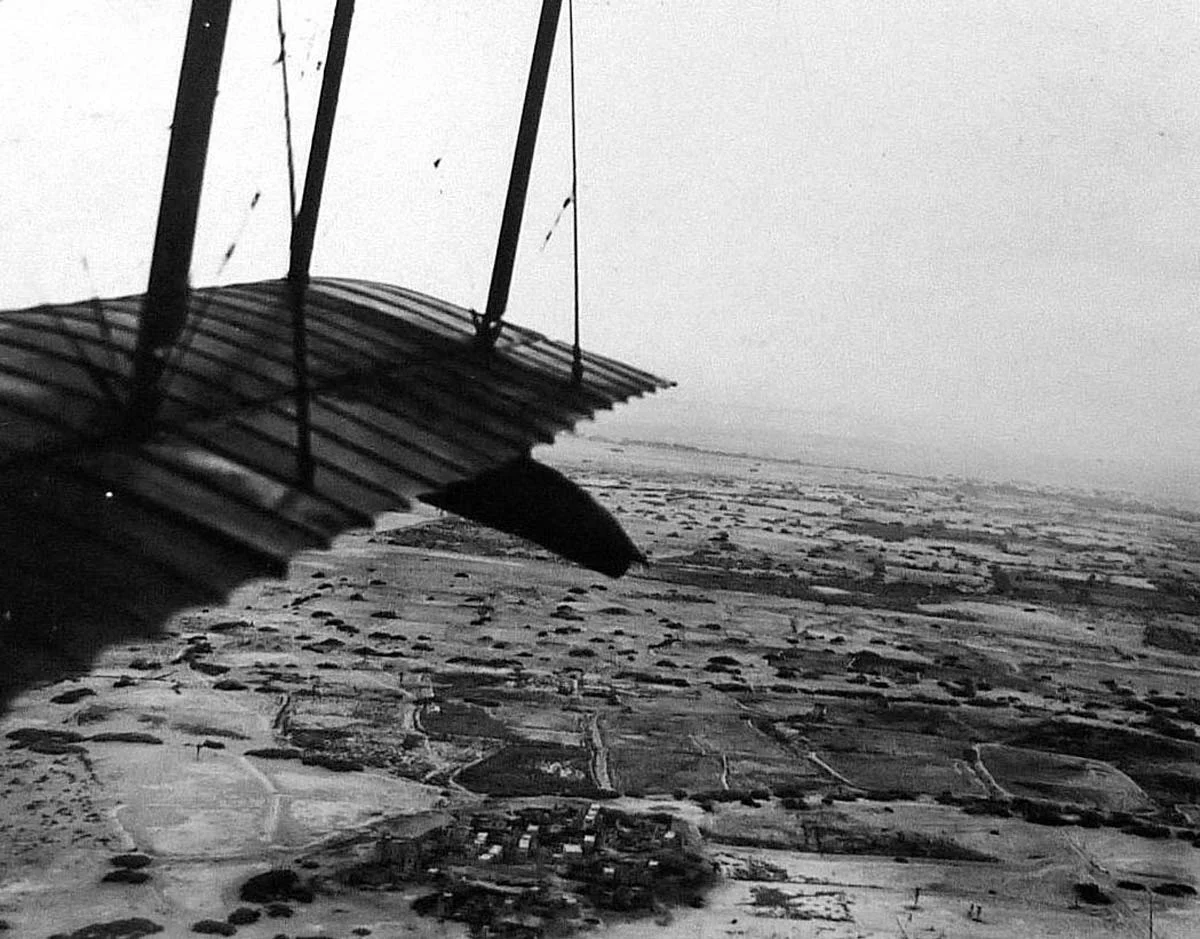
Samson and Benn’s flight was typical of those carried out by the Shorts over the next few days, a mix of bombing and reconnaissance. The Sopwiths were mainly engaged in hit and run bombing raids. One by Flt Lt England on the first day is typical. Taking off at 05.49 he flew Baby B.5 (one 65-lb bomb, a box of flechettes and a Lewis gun with two ‘Hoppers’) inland to Waht reaching just 500 feet altitude. England was back by 06.14.
Under fire from anti-aircraft gun in South corner of town. Dropped Flechettes on gun’s crew of about 6 men. Dropped bomb which hit the South Corner of Central Mosque and Adjoining bldgs. Circled around village firing one hopper from gun. Observed few people.
Bankes-Price attempted the same flight the following morning, also flying B.5 but with four 20-lb bombs and the Lewis gun. His flight was quickly terminated.
Flew inland to Waht at a height of about 1000 feet. About one mile south-east of Waht engine stopped dead. I dropped all my bombs at once and turned back towards Sheikh Othman, endeavouring to get into our lines before the machine dropped. The engine picked up slowly, and I managed to get back to the sea, landing in about 2 ft of water. I saw no signs of the enemy.
In an attempt to overcome the difficulties of operating overloaded machines in an unforgiving climate on the afternoon of 9 June one Short was flown solo. Short S.3 piloted by FSL Paine set out at 17.40 with a single 112-lb bomb. He was still only to reach 800 feet, but dropped his bomb into the middle of Waht, returning to the ship at 18.19. This is the last recorded flight for Short S.3. Two days later it is noted that it failed to take-off owing to engine problems.4
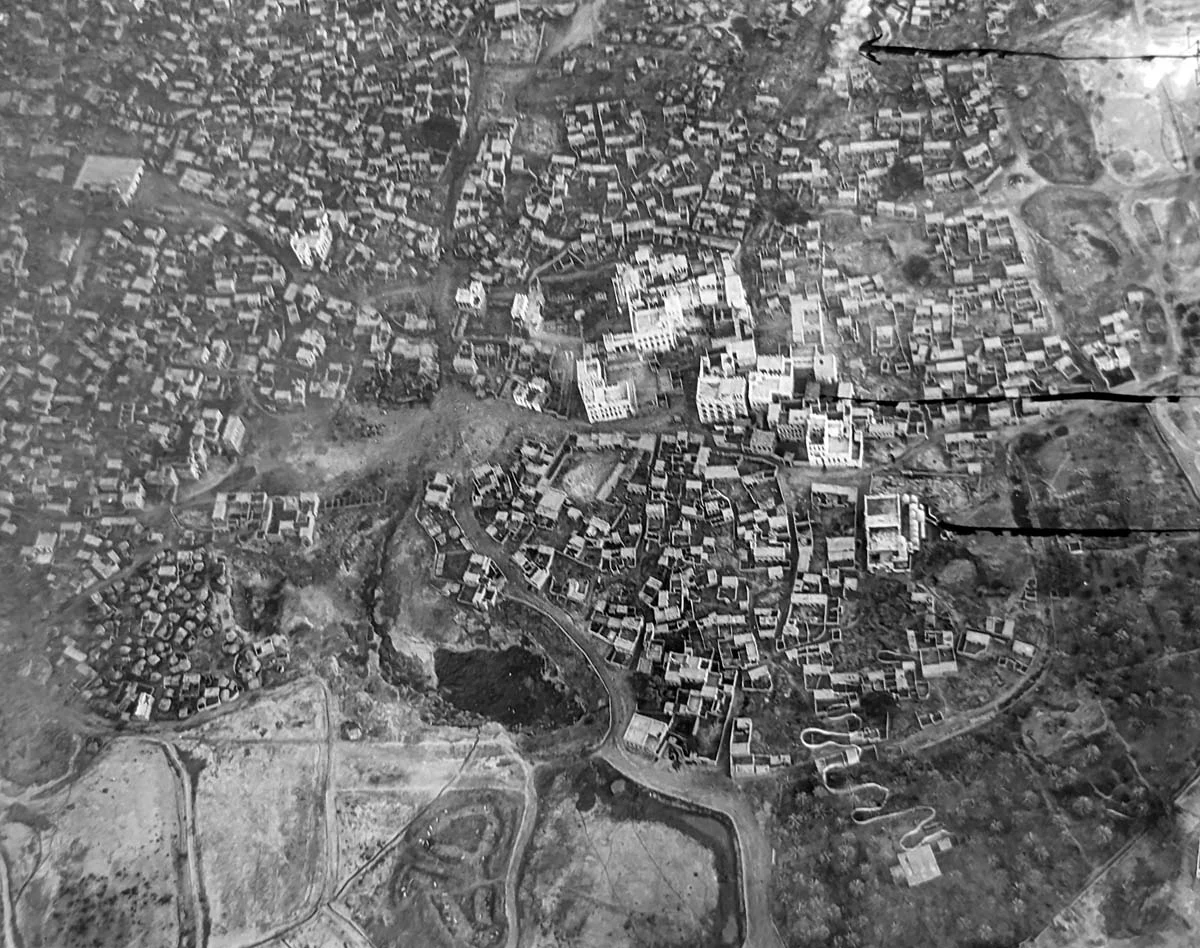
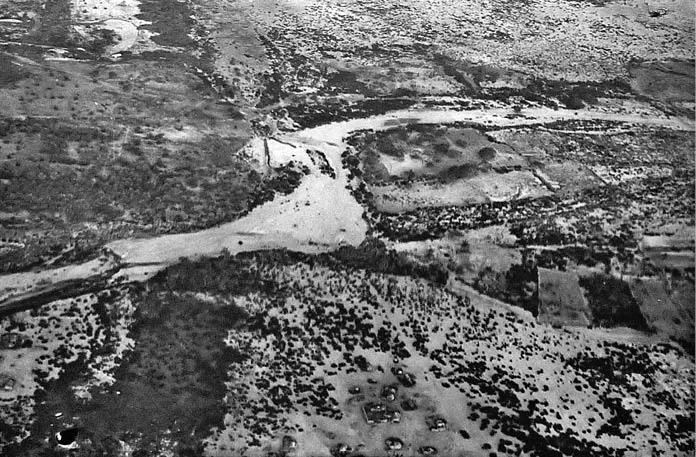
Operations over Aden wrapped up on 12 June after a bombing raid on Subar by Bankes-Price on Schneider B.1. Taking off at 05.26, he flew straight to Subar carrying two 20-lb and six petrol bombs. The first three petrol bombs were not observed and assumed not to have ignited. Of the remaining three, two started a small fire at one end of the camp, but the third started a ‘large blaze, which was still burning strongly when the coast was reached 15 minutes later. The two HE bombs fell on the north-western corner of the camp amongst some tents, apparently doing some damage.’ Samson noted that the fire could still be seen from the sea when Ben-my-Chree sailed that evening. Bankes-Price returned and was hoisted in at 06.01. A useful morning’s work.
Once again the results and effects of the raids were quickly known in Aden. Again, the morale effect far outweighed the material results. Turkish stock falling even lower with the local chiefs and tribes. The Turkish command attempted to stop caravans running into Aden, a ban widely ignored by traders. All in all, as Samson noted in his report, ‘In these circumstances, the results achieved, sometimes far inland, must be regarded as satisfactory.’
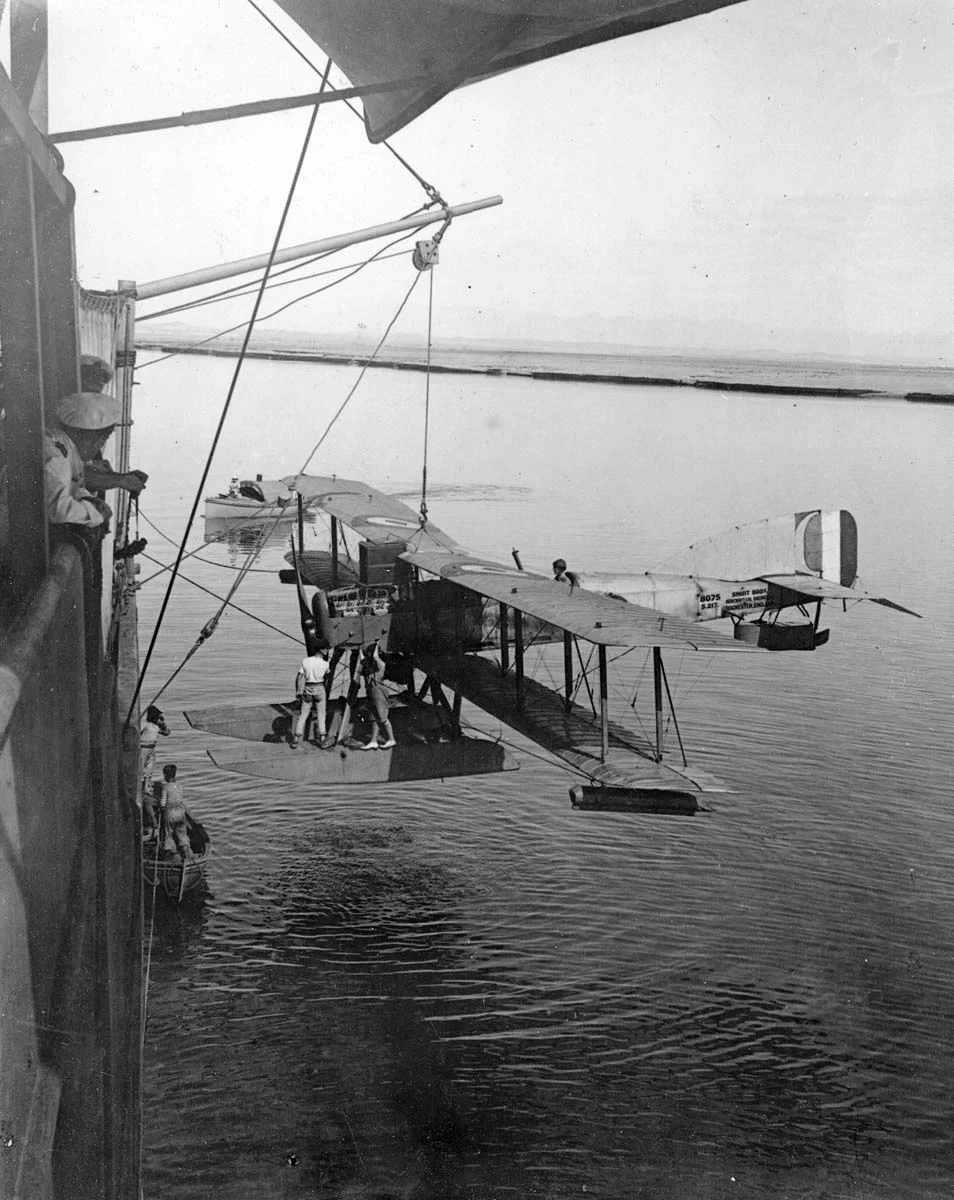
But Ben-my-Chree was not yet finished with the Aden Protectorate. Although due back in Egypt Samson, having first obtained the backing and approval of General Walton, decided to take some time to descend upon Sheikh Said. The Turks here, estimated at 500 men with five guns, occupied a small fort, some redoubts, and several tented camps on the adjacent jebels. They were conducting a desultory bombardment of the small British garrison on Perim Island. Colonel Alexander, Walton’s GSO at Aden, sailed with Ben-my-Chree. No doubt the promise of additional photographic coverage was the main draw, although his local knowledge would be useful to Samson.
Ben-my-Chree arrived off Perim Island at 04.00 on 13 June. Planning to conduct a bombardment with her 12-pdrs Samson launched W/T equipped Short S.2 soon after arrival. When engine trouble prevented the Short taking off, it was replaced by Schneider B.3, with five 20-lb and two petrol bombs, piloted by Bankes-Price. Ben-my-Chree closed to within 2000 yards of the shore, in a position permitting enfilade fire on camps at Jebel Malu and Jebel Akrabi. Instead of attempting to direct fire using flares, Bankes-Price dropped the two incendiary bombs some distance apart to give the line to the camps. He then dropped five HE bombs on the camps, starting fires that gave the ship’s gunners an aiming point. He later recorded seeing four shells burst in the camp. A single Turkish gun returned fire, but its shells fell short. Seeing troops moving about the hillsides Samson next turned his guns on this target of opportunity.
England now reported the Short repaired and ready for flight, so Samson turned Ben-my-Chree away from the coast to recover the Schneider and send off the Short. Getting off successfully, England and his observer 2Lt Burd directed fire on to two guns on the slopes of Jebel Akrabi. A brief exchange of fire now ensued. The ship was straddled, hit by shrapnel and a shell passed through the forward funnel without exploding. In return her gunners silenced one of the guns. While Ben-my-Chree shifted position to bombard a different camp, the Short’s crew took a series of photographs of the Turkish positions and dropped bombs on one of the camps. The spotting continued for a while until Ben-my-Chree withdrew once again to recover the floatplane. After refuelling, topping up water, oil and rearming, with a single 112-lb and 20-lb bombs, and two incendiaries, the Short was sent off again at 08.03 with a new crew, Flt Lt Wright and Lt Wedderspoon. Its flight to the south of Jebel Malu, encompassed several camps at Jebel Barika and Khor Ghorera. The latter received the 112-lb bomb, and several more photographs were taken. They returned at 08.32, the Short quickly refuelled, and rearmed as previously, and the crew changed, FSL Paine and 2Lt Clarke taking over. The third flight commenced at 08.48, returning shortly after 09.30. The camp at Jebel Akrabi was bombed again and the observations completed.
Later reports suggested that Ben-my-Chree had literally caught the enemy napping, asleep in their tents, although reports of 40 killed is so similar to the reported casualties at Aden as to be suspicious. The bombardment had raised the ship’s morale to new heights. Throughout the action the upper deck remained crowded with stokers and other crew members, whose duties normally kept them below decks, taking brief respites from their duties to ‘see the fun.’ Samson then set course for Port Sudan,5 intending to take on coal, ‘transferring Colonel Alexander, who had thoroughly enjoyed his first Naval engagement, to the Senior Naval Officer, who had arrived on the scene and joined in with his 4-inch guns.6
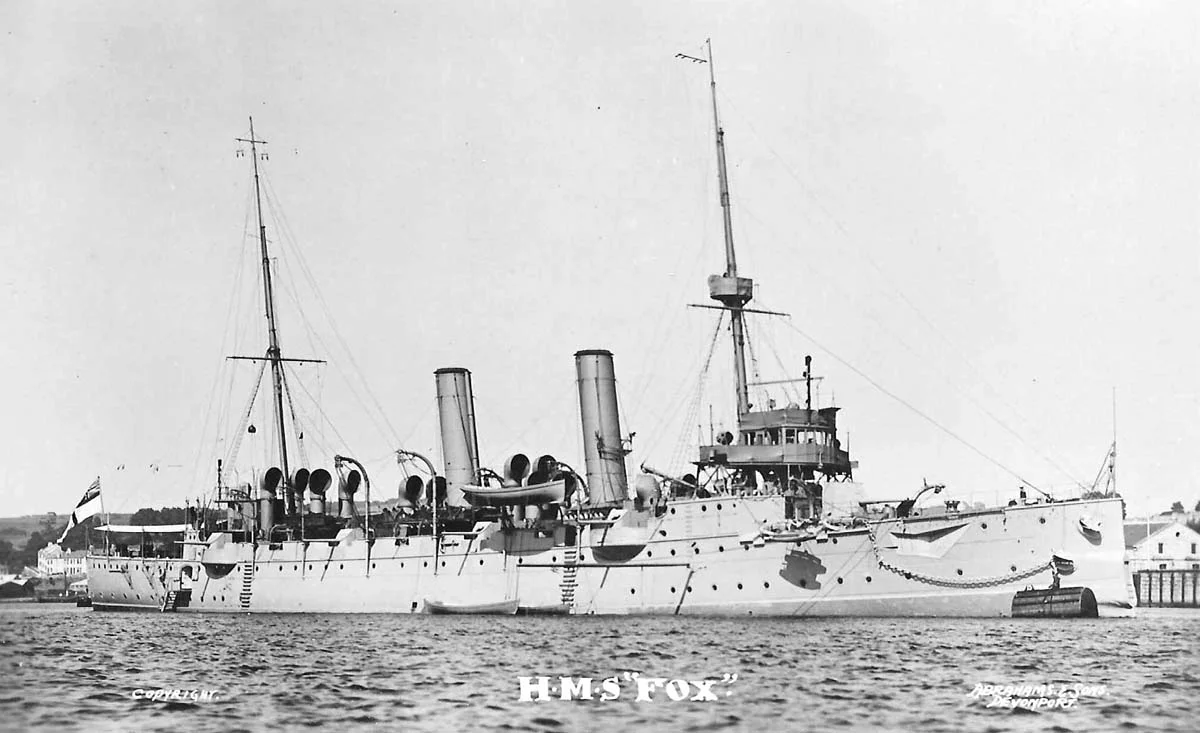
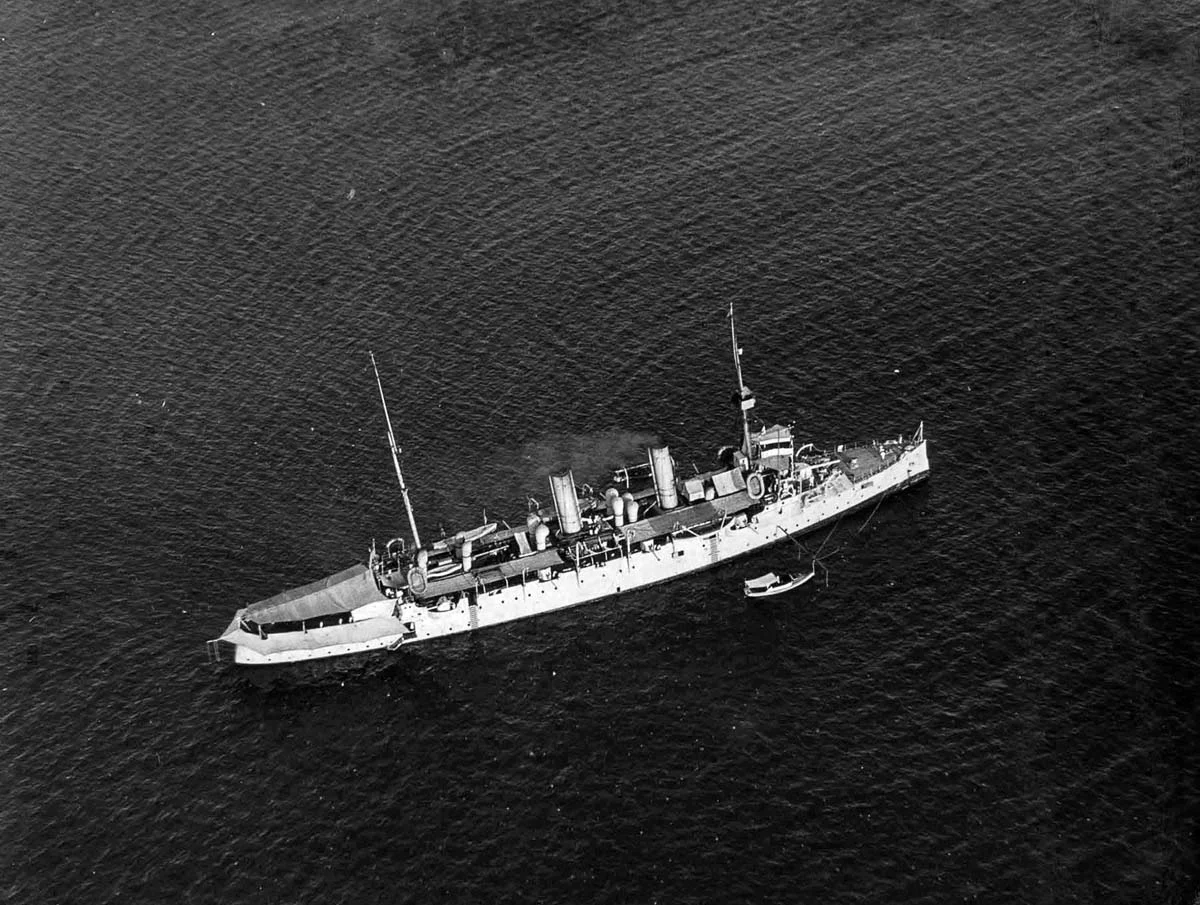
Approaching Port Sudan they were ordered to immediately proceed to Jeddah where urgent developments required their attendance. Arriving on the morning 15 June, and after negotiating a tricky passage through some reefs, Ben-my-Chree joined ships of the Red Sea Patrol, Fox, Hardinge, Dufferin, and Perth.7 Samson immediately met with Captain W.H.D. Boyle, commanding the Red Sea Patrol, aboard Fox. The ships were attempting to provide gunfire support for the Arab Army attacking Jeddah. Having been denied permission to land observers by the still distrustful Arabs, the British ships had to fire blind with mixed results. It was decided that in the evening the floatplanes would reconnoitre and bomb the Turkish positions. Then in the morning they would spot for the guns of the squadron.
By this stage in her cruise Ben-my-Chree had only three serviceable floatplanes available, Samson decided to employ them all. With Benn as his observer, he piloted Short S.2 armed with a single 112-lb bomb, two incendiaries and a Lewis gun. Two Schneiders, B.1 and B.3, piloted by Bankes-Price and England respectively, completed the trio. The Schneiders each carried a single 65-lb bomb and a Lewis gun. England had been tasked with attempting to breach a gate in the eastern wall of the town. He decided that the gate was too close to the mosque to risk dropping the bomb, instead dropping it on a group of soldiers west of the wall. Attacking trenches to the south of the town, Bankes-Price dropped his bomb from only 100 feet, receiving a shaking from the resulting explosion. He then flew along the trenches, firing his machine gun into them until all his ammunition was exhausted.
Samson and Benn flew across the town and defences, taking several photographs, noting some bombardment damage on the southern walls and south-western tower. They dropped the 112-lb bomb on two guns to the south east of the town, missing by 50 yards. Passing along the seaward side of the defences the Short came under heavy shrapnel and rifle fire. Whilst examining a redoubt to the north the Short was hit several times, one bullet removing the heel from Samson’s right shoe, as well as nearly shattering the supports of his seat. Another hit started a severe vibration. Thinking his engine had been damaged Samson headed out to sea and put the Short down as soon as possible, immediately stopping the engine. One of the ship’s motorboats came up and towed the floatplane back alongside. When hoisted aboard and examined, the propeller was seen to be badly splintered by a bullet whilst another bullet had almost severed the elevator control wires. Thankful for their narrow escape from disaster Samson set his maintenance crew to work repairing damage for the morrow.

At dawn, as Ben-my-Chree was preparing to launch her spotters, a white flag went up over the town as Jeddah surrendered. In his signal cancelling the flight Captain Boyle added, ‘probably the seaplanes decided the matter.’ To the garrison, already battered by several days bombardment, the appearance of the aeroplanes may indeed have been the deciding factor, their final straw. Samson’s claim that ‘three inefficient rather antique seaplanes took Jeddah’ is somewhat stretching a point…
All Flight Reports employ only Samson’s Serials which will be followed in the text. Shorts, S.2/850 and S.3/8082; Schneiders, B.1/3789 and B.3/3790; and Baby B.5/8189. See Appendix 2: Samson’s Serials for EIESS Floatplanes.
↩C.R. Samson, Fights and Flights, p.305.
↩AIR 1/1707/204/123/68. Operation reports: HMS Ben-my-Chree.
↩Short S.3/8082 had engine problems which were not repairable on board.
↩Port Sudan was built between 1905 and 1909 to replace the old harbour at Suakin.
↩Samson, Fights and Flights, p.311. The ‘SeniorNaval Officer’ was probably Commander L.N. Turton, Royal Indian Marine Ship Northbrook (1907, six 4.7-inch guns).
↩HMS Fox was an old (1893) Astraea-class 2nd class protected cruiser armed with two 6-inch and eight 4.7-inch guns, she was the flagship of the Red Sea Patrol, Captain William Henry Dudley Boyle (later Admiral of the Fleet, Twelfth Earl of Cork and Orrery). RIMS (Royal Indian Marine Ship) Hardinge (1900, six 4.7-inch guns), and Dufferin (1904, six 4.7-inch guns), were armed transports specially designed and built for the RIM. HMS Perth was an armed boarding steamer (three 4.7-inch guns).
↩
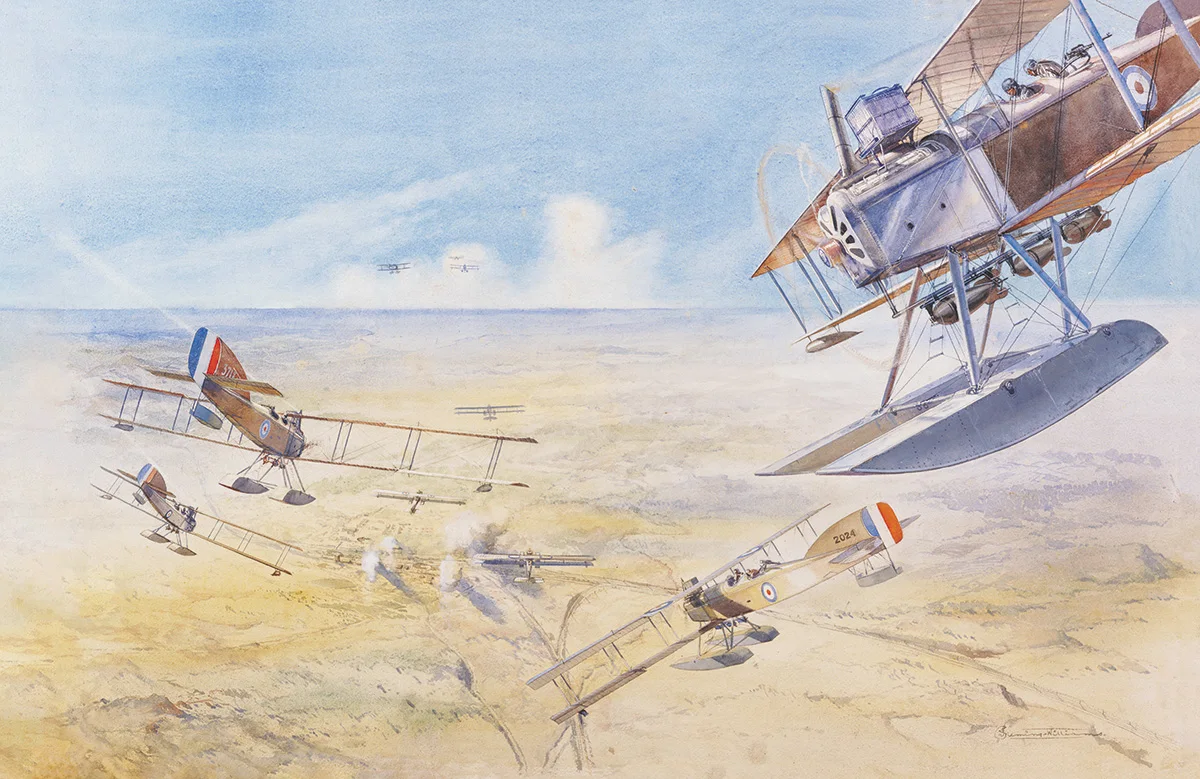
Floatplanes Over The Desert
The Adventures of French & British Naval Airmen Over Sea & Desert Sand 1914-1918
Ian Burns offers readers an unprecedented look into this overlooked chapter of aviation history, where innovation and courage combined to write some of the most extraordinary stories of the Great War.
Floatplanes Over The Desert is available in paperback and ebook from Amazon.
